Fujifilm FinePix XP30 Review
Fujifilm FinePix XP30
This affordable rugged compact doesn't set records for image quality but is a great companion for your outdoor frolics, whatever the weather.
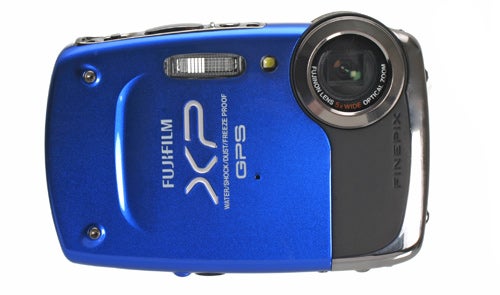
Verdict
Pros
- Waterproof, dustproof and shockproof
- Cheaper than many tough alternatives
- Onboard GPS
- Very compact design
Cons
- Mediocre image quality
- Particularly poor high ISO performance
- GPS drains battery quickly
Key Specifications
- Review Price: £167.15
- 14 megapixel sensor
- 5x zoom lens (28 - 140mm)
- Onboard GPS
- Waterproof, dustproof and shockproof
Designed for outdoors enthusiasts looking for a camera that can take a few knocks, the XP30 is a ruggedly constructed, 14-megapixel, point-and-shoot compact camera that claims to be water proof to a distance of five metres, shock proof up to 1.5 metres, freeze proof to -10 degrees Celsius, and fully sealed against dust and sand. Priced at a mere £150, it’s markedly cheaper than many such rugged compacts so could be the budget choice for adventurous types.
Looking remarkably similar to the XP10 model it replaces, the new model sports quite a few external design tweaks, plus a range of internal upgrades, and some entirely new features altogether.
Chief among these is an all-new, built-in GPS function that can be set to automatically tag the metadata of each image with location details, either in the form of longitude and latitude coordinates, or by place name. More on its effectiveness later, but first the other headline specs.
The XP30 is built around a 14-megapixel 1/3.3-inch CCD sensor that records JPEG images in 4:3 aspect ratio at a maximum resolution of 4320 x 3240 pixels. If card space is scarce, or if you’re shooting for the web then there’s a 7-megapixel Medium setting and a 3-megapixel Small setting to fall back on too.
The XP30 can also record images in 16:9, although this drops the camera’s highest available resolution to 10-megapixels, up to a maximum image size of 4320 x 2432 pixels. For all still images there’s also the standard choice of ‘Fine’ or ‘Normal’ image quality to choose from. 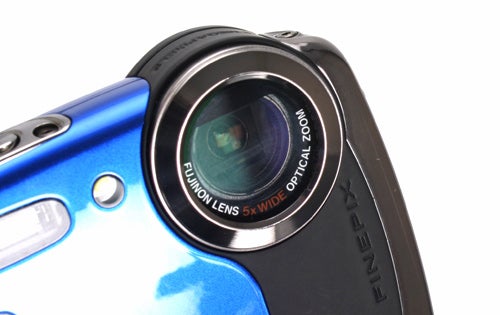
The Fujinon 5x optical zoom offers a focal range of between 28-140mm in 35mm terms and sits on the top-left shoulder of the camera as you look at the rear monitor, neatly out of the way of any stray fingers that might obstruct it. It’s a folded lens design, meaning it’s fully encased within the camera. While this keeps dirt and water out we did find the toughened outer glass to be something of a finger-print magnet that required almost constant cleaning.
Helping in the fight against blur caused by hand shake at lower shutter speeds, the XP30 comes equipped with Dual Image Stabilisation that employs a combination of sensor-shift and automatic ISO-raising to help keep images as sharp as possible.
Zoom controls have moved to the top of the camera (they used to found on the back of the XP10) and now take the form of a spring-loaded slider, rather than two buttons. Continuously held, the lens moves through its focal range quite quickly – we repeatedly timed it at 1.8 seconds to go from 28mm to 140mm.
In contrast, and by carefully flicking the spring-loaded trigger to exact the shortest hops possible we managed to find 15 individual stops between the wide angle and telephoto extremes.
The back of the camera gets a 2.7-inch, 230k-dot LCD monitor, which is fairly standard for a £150 compact. While the monitor’s resolution is fine for navigating through menu settings and reviewing basic composition with, more detailed viewing on it proves less rewarding as there’s also a tendency for it to make images appear slightly darker than they actually are. It’s also very difficult to use in bright sunlight, though this is somewhat typical of these toughened compacts.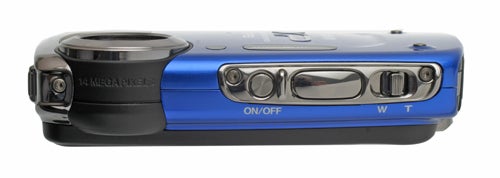
The XP30 is very much a point-and-shoot camera and, accordingly, the range of shooting modes on offer is fairly limited. In addition to fully Automatic mode, the XP30 also offers a Scene Recognition mode that automatically selects the best individual scene mode based on the subject; a Program mode that selects shutter speed and aperture, but allows the user to adjust parameters such as ISO, white balance and AF mode; 17 individual Scene modes ranging from portrait to landscape and underwater; and finally, an easy-to-use Panorama mode that takes three pictures and stitches them together in-camera to create a single 180-degree panorama.
Movie recording is catered for with a choice of either 1280×720 Hi-Def or 640×480 VGA quality at 30fps. Both record audio in mono and movies are stored as Motion-JPEG files. Hi-Def movie quality isn’t the greatest we’ve seen, displaying some noticeable choppiness with moving subjects and there’s a general lack of fine detail – an issue that, as we shall be highlighting shortly, extends to the camera’s still image quality.
One neat little touch, though, is the addition of a red-dot instant movie record button on the back of the camera where the XP10’s zoom controls used to sit. Although single-touch movie recording buttons are becoming increasingly common on cheaper point-and-shoot compacts, it’s a feature that was absent on the XP10 so it’s good to see the addition here. 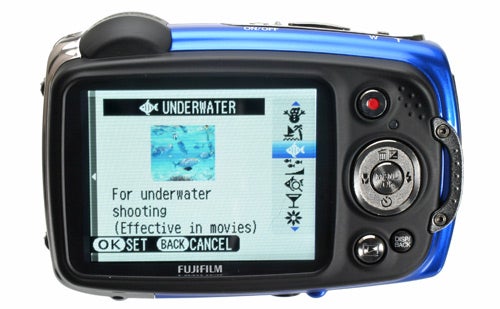
Within the Playback menu, there are basic image editing tools to crop images or alter their contrast, colour and brightness, along with a red-eye removal feature and a face pixelator. Users can also set the camera up to automatically upload content to YouTube and Facebook the moment the camera is connected to a computer.
Two other playback features of note include a built-in Photobook Assist function that uses embedded GPS data to create digital scrapbooks of images from specific locations that you can then browse through on the XP30. In principle it’s a nice touch, however the low resolution of the monitor does make it a bit of a flat experience.
More useful – at least for budding explorers in unfamiliar environments – is the camera’s Photo Navigation mode that displays the distance and compass direction to any previously GPS-tagged images from your present location.
Turning to the XP30’s main USP – its built-in GPS system – we had mixed feelings. On the one hand it can be a useful tool to have, especially if you’re looking to Geotag your travels or simply mark the location of a fantastic view. It’s also incredibly accurate, to within a few feet. However, having the GPS either ‘always on’, or even just ‘when camera is on’ is a huge drain on battery life, while turning it off altogether kind of defeats the purpose of having it. We found that in constant usage, with GPS set to ‘when camera is on’ the battery lasted for an hour and a half before dying, producing a total of 160 images and just over two minutes of HD movie footage.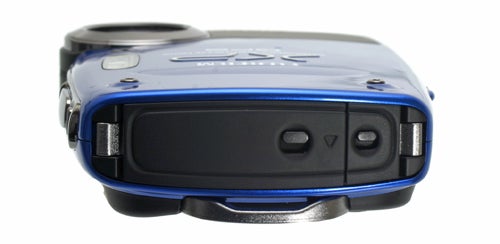
It’s also worth noting that the GPS function only operates outdoors, so trying to Geotag photos from inside a building isn’t possible – at least we couldn’t get it to work indoors. Connection times will vary wildly too, depending on your location and environment. In field tests with the GPS function set to ‘when camera is on’, we found that the initial attempt to link-up with a passing satellite could take up to a minute, although subsequent connections gradually reduced in time.
Image quality is a bit of a mixed bag. While the XP30 produces images that are more than adequate for web use or smaller prints, we wouldn’t really want to rely on it for making larger prints with.
Automatic white balance is generally quite accurate, which helps to ensure true colour reproduction. Colour strikes a good balance, being neither too flat nor overly saturated. Sharpness is a problem though, with the folded Fujinon lens often struggling to produce acceptable edge sharpness in images.
As regards image noise, the combination of such a small sensor crammed with so many megapixels did lead us to worry that the XP30 might display excessive noise at mid to high sensitivities, and indeed this turned out to be the case. Perhaps if Fuji had limited sensor resolution to 10MP this wouldn’t be such an issue, but at 14MP we can’t but help feel the XP30’s tiny sensor is overpopulated. 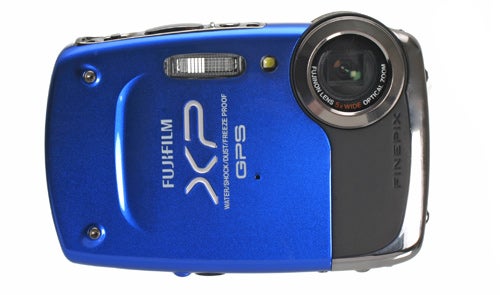
At ISO 100 and 200, images remain sharp with good fine detail, however above this noise begins to become more noticeable, visibly intruding into fine detail and shadow areas. By ISO 400 noise becomes visible even in images of a reduced size, and by 800 it is even more pronounced. Further up the scale ISO 1600 is fuzzy in the extreme and ISO 3200 all but unusable.
Of course, image quality needs to be taken in context. Not only is the XP30 a ‘tough’ compact, it’s also a very competitively priced tough compact, which is built to survive the kinds of knocks, scrapes and soakings that would damage most non-toughened cameras. As such some image quality compromises are all but inevitable. The recently tested Panasonic FT3 does display better overall image quality, along with far superior ISO performance, but costs twice as much as the XP30. As the old saying goes, you pays your money and takes your choice.
”’Verdict”’
The XP30 is a keenly priced and stylish addition to the burgeoning tough compact market. Easy to use and thoughtfully laid out in terms of controls it’s capable of decent, if not great, results. The addition of GPS functionality is a fun, if somewhat battery depleting, feature too. Our only real concerns are with lens sharpness and image noise. It’s to be hoped that the next model in the series will address these issues by dropping the megapixel count down to something more manageable. In the meantime, the XP30 is certainly worth a look if you’re in the market for a tough compact on a budget.
A selection of images taken at the camera’s various light sensitivity (ISO) settings showing how the camera’s image quality degrades at high ISO settings, and thus how it will cope in lower light situations. All shots are taken using available daylight. The FujiFilm FinePix XP30 has a range that spans from ISO 100 to ISO 3200
—-
(centre)”’At ISO 100 there’s no noise artefacts visible though you can straight away see there’s a slight blotchiness to this camera’s pictures.”’(/centre)
—-
(centre)”’At ISO 200 there’s a slight level of graining to the dark areas but generally things are still fine.”’(/centre)
—-
(centre)”’At ISO 400 there’s already a noticeable drop in detail and more graininess.”’(/centre)
—-
(centre)”’At ISO 800 the whole image starts to take on a grainy look that’s discernible even zoomed out.”’(/centre)
—-
(centre)”’At ISO 1600 things just get worse as the graininess now incorporates specs of incorrect colour and detail loss is significant.”’(/centre)
—-
(centre)”’ISO 3200 is frankly unusable.”’(/centre)
—-
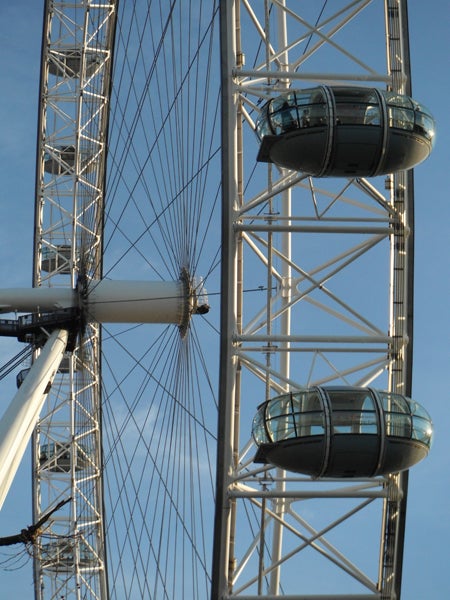
This image of tourist landmark, The London Eye, displays sharp edges and a pleasantly realistic blue sky. Highlights are also well retained with a good balance between shadows and highlights. (1/400second @ f/4.8, ISO 100, AWB)
—-
The XP30 has done a reasonable job capturing these street performers performing a samba number in the late evening sun. White balance is accurate enough, though the shadow areas could ideally do with a little post-production boost. (1/250second @ f/8, ISO100, AWB)
—-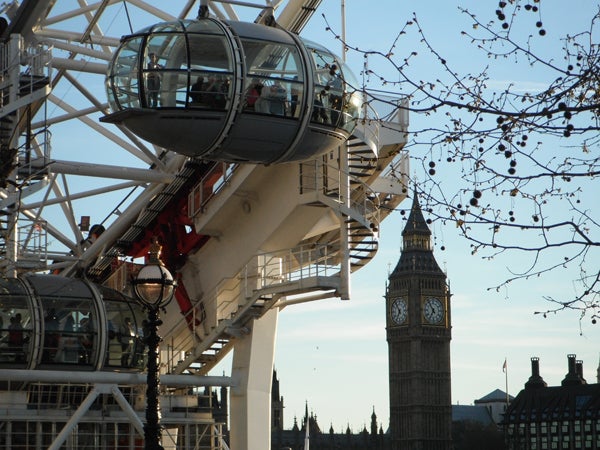
Two London landmarks in one image make for a classic tourist snapshot! The XP30’s metering system has done a good job of lifting the mid-tones and shadow areas, without losing too many highlights from the sky, although a little more contrast, would add a bit more punch. (1/350second @ f/3.8, ISO 100, AWB)
—-
This image was shot using the Flower scene mode, so the XP30 has chosen a small aperture to throw the background, thereby drawing attention to the flower itself. Even in this scene mode, colour remains accurate without being overly saturated either. (1/60second @ f/3.8, ISO 200, AWB)
—-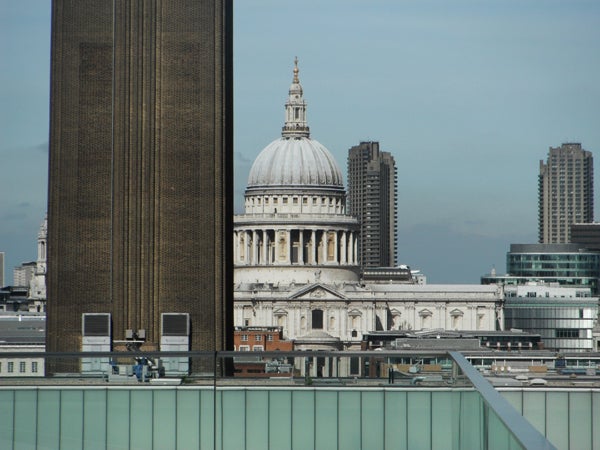
While the focus on the dome of St Paul’s keeps the cathedral itself nice and sharp, there is still some considerable barrel distortion visible on the chimney stack of the Tate Modern building to the left of the image, along with some purple fringing where the dark bricks meet the bright blue sky. (1/640secons @ f/8, ISO 100, AWB)
—-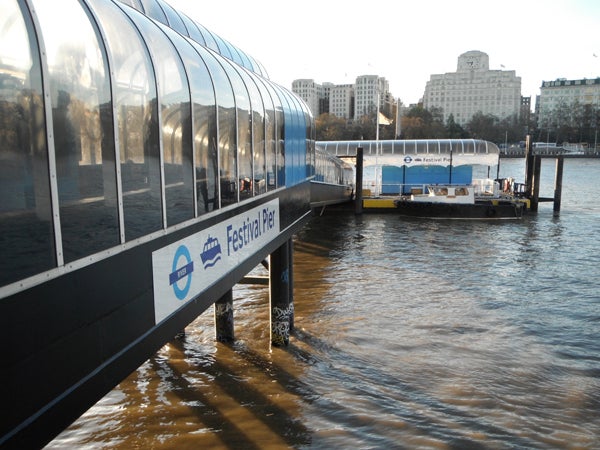
Thanks to the shielding effect of the pier, this attempt at shooting into the late-evening sun has turned out rather well. Given that we were shooting contre-jour, we expected to lose sky highlights, however the XP30 has struck a good balance elsewhere – retaining both the highlights on the water directly under the pier, and keeping enough detail in shadow areas to make the sign legible. (1/180second, f/4.1, ISO 100, AWB)
—-
In this high-contrast scene the XP30 has struggled somewhat with the dynamic range, opting to retain shadow detail at the expense of highlights. White balance is also a little out here, with a visible green cast that ideally needs correcting with digital post-processing software. (1/400second @ f/6.1, ISO 200, AWB)
—-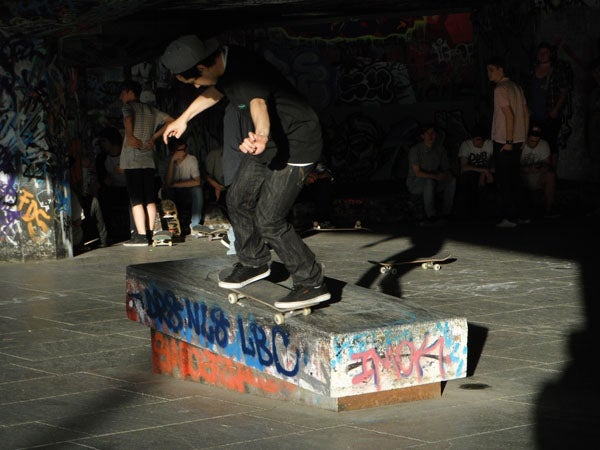
This image was taken using the XP30’s ‘Sport’ scene mode, no doubt an important mode for the camera’s target audience. The XP30’s autofocus mode has done a relatively good job of keeping the primary subject in focus here, and has also opted to retain highlights at the expense of shadow detail behind the skateboarder where the onlookers are sitting. (1/350second @ f4.8, ISO 100, AWB)
—-
Trusted Score
Score in detail
-
Value 8
-
Image Quality 7
Features
| Camera type | Digital Compact |
| Optical Zoom (Times) | 12 Xx, 5 Xx |
| Image Sensor | CCD |
| Image Stabilisation | Optical |
| LCD Monitor | 3 in, 2.7 in |
| Flash modes | Auto Flash, Flash OFF, Flash ON, Red-eye Reduction, Slow Sync |
| Video (max res/format) | 640 x 480, 1280 x 720 |

